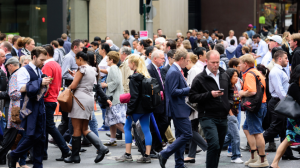The Philippines is an archipelago of more than 7,100 islands – some of which have topped lists of the most beautiful islands in the world. The most famous tourist destinations in the country include the islands of Palawan, Boracay, Cebu and Bohol – but these are just scratching the surface. There are thousands of areas to explore in the Philippines. Many have remained raw and untouched by modernization, while others are bursting with urban chic and vivacity. With tourism as a major economic activity in the country, it is not difficult to find great places for lodging, dining, shopping and partying – whatever your budget is. But before coming to the Philippines, it is best to be prepared. Here are some things that you should know about this country of exciting contrasts.
The Archipelago
The Philippines is geographically organized into three major island groups: Luzon, Visayas, and Mindanao. The island of Luzon is the biggest in the country and is home to the capital, Manila. It is also the most populous, with Metro Manila (the city of Manila and its 16 neighboring cities and municipalities) being the most densely-populated area in the country. With a coastline totaling around 36,000 kilometers, there is a wealth of beaches in the country. But there’s also great variation in the terrain, from coastal lowlands to mountains, and there are quite a few ecoregions.
The Weather
The Philippines has a tropical climate and two seasons: wet and dry. Wet season starts in May and ends in October. While the country has microclimates in various areas, you can generally expect high temperatures and humidity, and plenty of rainfall all year round. May is the hottest month, with an average temperature of around 30 degrees, while January is the coolest, with an average temperature of 26 degrees.
The Culture
The Philippines is a unique mix of cultural influences from its early Asian settlers (predominantly Malays and Indonesians) and trading partners (like the Chinese and the Indians,) as well as later Western colonizers, particularly the Spaniards, who ruled the country from the 1500s to the late 1800s, and the Americans, who annexed the Philippines from the early 1900s to 1946. English is widely spoken and is the official language, along with Filipino, the national language. In addition to English and Filipino, there are more than 100 indigenous languages or dialects spoken in different regions across the country. About 90% of Filipinos are Catholics, and the Catholic religion has major influences in the culture. While the people are predominantly Christian, there’s a staunch Muslim population in the southernmost island group of Mindanao.
The Economy
In recent years, the Philippines has emerged as an important market economy in the Asia-Pacific region, coming behind only China and Vietnam in economic growth. Despite slow global growth, the country is seen to remain a strong performer, with impressive projected growth rates over the next few years. Business Process Outsourcing (BPO) has been leading the pack of growing industries in the Philippines, followed by tourism, retirement and courier services. The country’s biggest economic challenge is reducing poverty, particularly among agriculture-dependent households. Solid macroeconomic policies instituted in the last few years and continued reforms to achieve more inclusive growth are seen as keys in improving the country’s poverty problem.
Getting to and Around the Philippines
By far, the busiest and largest airport in the Philippines is the Manila Ninoy Aquino International Airport. However, the country also has 11 other international airports, which are closer and make for easier transfer to final tourism destinations. These “other” airports include:
- Mactan- Cebu International Airport (Cebu)
- Francisco Bangoy International Airport (Metro Davao)
- Iloilo International Airport (Metro Iloilo)
- Clark International Airport (Metro Angeles)
- Puerto Princesa International Airport (Palawan)
In addition to these, there are also around 33 domestic airports and 40 community airports in the country. Other transportation options include passenger vessels, ferries and pumpboats (or bancas) for sea travel; and taxis, car rentals, buses, tricycles and the ubiquitous jeepneys for land travel. Uber and Grab services are also available in Metro Manila.
Visa Requirements
Nationals from at least 150 countries can enter the Philippines without a visa, provided they stay a maximum of 30 days, have a passport valid for the next six months, and a return or outbound ticket to their country of origin or next destination. They get a free Visa Waiver at the Immigration Desk upon arrival, which can be extended for another 29 days. If you’re staying longer than 59 days, then it’s best to obtain a Temporary Visitor’s Visa (or Tourist Visa), that allows up to 2 to 12 months’ stay in the Philippines.









